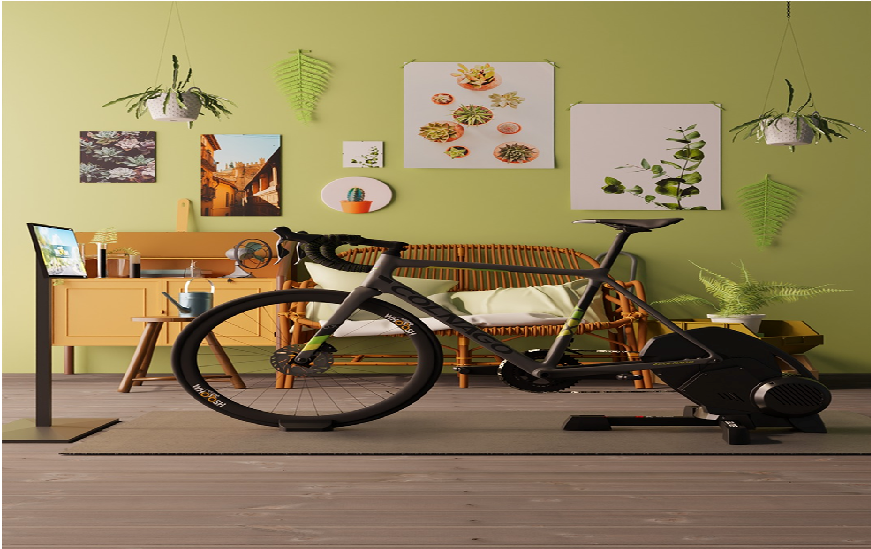Indoor cycling, also known as spinning, has become one of the most popular forms of indoor exercise in recent years. With busy schedules keeping many people from outdoor cycling, indoor cycling classes provide a convenient and effective full-body workout right in your own neighborhood. However, mastering the techniques of Indoor cycling takes practice. This blog will cover each of the required methods and exercises to advance your indoor riding. You’ll master spinning by the end!
1. Bike Set Up for Proper Form
Getting your indoor cycling bike fitted correctly is essential for proper form, comfort and performance. The first adjustment is seat height. To set this properly, sit on the seat with one pedal at its lowest point. The knee of your leg is supposed to be a little bent. Raise or lower the seat until this is the case. Adjust the handlebar position. You should be able to rest your hands on a handlebars without stooping or straining your back if the handlebars are near enough. However, they shouldn’t be so close together that you are unable to completely extend your arms. Try out several positions until you discover one that offers the ideal combination of support as well as range of motion.
Pay attention to your toe cages. These are the straps that hold your shoes securely to the pedals. The toe cages need to be tight enough that your feet don’t slip around during intense intervals. However, they shouldn’t be so tight that you can’t easily get in and out. Try clipping in and out a few times to test the tightness. Proper bike fit is crucial because it allows you to pedal efficiently through your full range of motion without unnecessary strain. Taking the time to adjust the seat, handlebars and toe cages according to what feels comfortable for your body ensures optimal form and safety on the bike.
2. Mastering Your Pedal Stroke
The pedal stroke is the most important skill to develop when indoor cycling. The basic motion involves circling your foot around the pedal in a smooth motion, pushing down with the ball of your foot and pulling up with your heel. This circular motion mimics the natural motion of pedaling outdoors. It’s important to focus first on proper form without resistance. This allows you to concentrate solely on your technique before adding intensity. Pedal through the full range of motion with each revolution to engage all the muscles in your lower body. Go slowly at first if needed.
Practicing with one leg at a time can help you refine your balance and engagement of muscles on each side. Alternate between left and right to identify any imbalances. Drills like pedaling only on the balls of your feet or heels can also strengthen specific areas. Once you’ve mastered the basic stroke, experiment with pedaling in higher and lower gears. Higher resistance gears require more force to pedal while lower gears rely more on cadence. Switching between them challenges your muscles in different ways.
3. Incorporating Upper Body Movement
Engaging your entire body during indoor cycling is important for several reasons. First, it significantly increases the calorie burn and the overall effectiveness of your workout. While cycling works the large muscles in your lower body, incorporating upper body and core movements challenges more of your full muscular system. This leads to greater calorie and fat burn both during and after your ride. Staying static in only your lower body is less stimulating for your metabolism.
Moving your arms, shoulders and torso in sync with your pedaling forces your heart to work harder to supply oxygen to more working muscles. However, engaging your upper body enables you to avoid injuries and long-term lower body tiredness. Cycling is a vigorous workout that strains your back, knees, and hips. Involving your upper body shares the workload between more muscle groups. This reduces strain and risk of overuse injuries down the road.
4. Understanding Class Structure and Intensity Levels
Indoor cycling classes follow a structured format that progresses in intensity over time. Being familiar with the class structure allows you to pace yourself and get the most out of each ride. Typical indoor cycling classes include a warm-up, main set with interval training, and cool-down. Interval training involves alternating periods of higher intensity “sprints” and lower intensity “recoveries” to challenge your endurance and push your limits. Classes are also rated by difficulty to match your fitness level, from beginner to advanced. Communicating with the instructor ensures you challenge yourself appropriately to see steady gains over time.
5. Equipment and Accessories for Advanced Riding
Once indoor cycling fundamentals are mastered, additional equipment can take your training to new heights. Clipless pedals that attach your shoe securely to the pedal via a cleat system allow for a more natural pedal stroke and power transfer. Heart rate monitors provide data to track your progress and guide intensity. Bike-mounted fans keep you cool during challenging rides. Hydration packs and nutrition supplements fuel intense sessions. And indoor cycling shoes with stiff soles maximize power to the pedals. Investing in quality gear matches an advanced rider’s commitment to indoor cycling as a serious fitness pursuit.
6. Indoor Cycling for a Lifetime of Health
Regular indoor cycling will benefit your weight control, cardiovascular health, and muscle endurance. But the advantages go further than that. Indoor cycling cultivates mental strength, reduces stress and anxiety, and fosters community through group fitness classes. Riding indoors makes consistent training achievable regardless of weather or busy schedules. Varied class formats and instructor playlists prevent boredom. And indoor cycling injuries are relatively rare with proper form and gradual progression. Incorporating indoor cycling into your weekly routine sets you up for a lifetime of health, wellness and enjoyment on and off the bike.
Conclusion
The virtual cycling events is an accessible and effective full-body workout. With consistent practice of proper technique, understanding of class structure, and use of supportive equipment, you’ll be well on your way to mastering the skills of indoor cycling. Don’t be afraid to challenge yourself with interval training and advanced drills over time. Soon you’ll be spinning circles around beginners and feeling stronger, fitter and healthier than ever before. The journey to indoor cycling mastery starts here – so get pedaling!




